Discovering the deep unknown
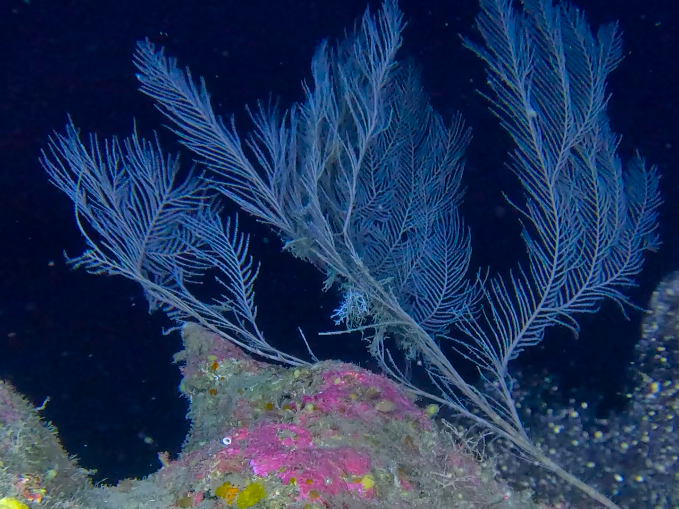
Screenshot from ROV footage collected during surveys at Akrotiri and Dhekelia, Cyprus. Coral Callogorgia verticillate. Credit – Marine & Environmental Research (MER) Lab.
The ‘unknown’ mesophotic ecosystems of Akrotiri and Dhekelia in Cyprus
Cyprus’s ocean mesophotic zone, at depths of 50 – 200 m, is mostly unknown and has been largely underexplored. But at these depths, where light fades, a seascape we rarely witness has come into view. Through the project ‘’Mesophos' - exploring the mesophotic zone of Cyprus UKOTs’, the Marine & Environmental Research (MER) Lab carried out the first systematic exploration of mesophotic ecosystems in the Sovereign Base Areas of Akrotiri and Dhekelia, surveying 34 stations with a Remotely Operated Vehicle (ROV) over a total of 44 dives.
Strong collaboration with authorities and citizens made this possible. The Sovereign Base Areas Administration and the Department of Fisheries and Marine Research shared seabed maps and fishery-independent data with the project team. They also worked closely with the project to align methods with policy needs.
Local fishers were vital: more than 60 were consulted, and 17 provided georeferenced, time-stamped sightings that guided site selection before the ROV surveys. Mediterranean taxonomic specialists verified identifications, strengthening data quality. As a formal partner, Blue Marine Foundation provided an international policy framework and links to UK institutions, helping to ensure that the findings inform conservation discussions for the UK Overseas Territories and beyond.
These surveys revealed extensive assemblages of sponges, corals, anemones, and other benthic (bottom dwelling) organisms that create three-dimensional habitats at these depths and support rich marine life. A total of 223 taxonomic groups across 16 phyla were recorded, with 108 confirmed to species level, including several not previously reported in Cyprus; many are protected or threatened. These mesophotic habitats act as biodiversity refuges and contribute indirectly to the sustainability of fisheries by strengthening the resilience of marine resources. Standardised habitat lists, maps, and simple condition scores are now available for authorities to use.
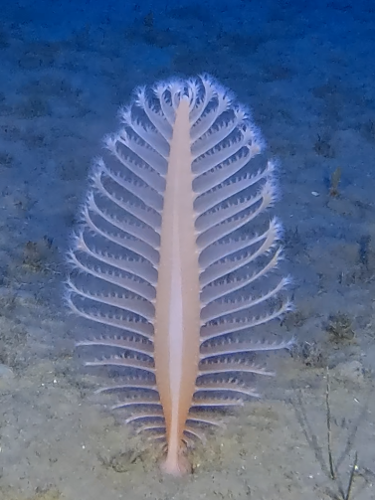
Unfortunately, despite the depth, the human footprint was evident. The team documented marine litter and lost fishing gear (ghost gear) that continue to affect marine life. Marks from bottom-towed gear / trawling that cause disturbance to sensitive habitats were noted, as was the presence of alien species, and coral necrosis likely linked to ocean warming. These vulnerable habitats develop extremely slowly and have limited capacity to recover once disturbed.
The ‘Mesophos' findings confirm the presence of sensitive ecosystems at 50 – 200 m depth and documents the pressures they are facing. There is an urgent need to adopt targeted protection measures of these areas, such as spatial restrictions on damaging activities and active management / removal of litter and lost gear. This, together with long-term, systematic scientific monitoring, can safeguard this hidden natural wealth that is essential for Cyprus’s marine heritage, and for future generations.
The datasets from this project will be integrated into fisheries plans and provide the first ecological baseline for protection planning at these depths. More broadly, the datasets provide immediate value to statutory frameworks, such as Habitats Directive / Natura 2000, Barcelona & Bern Conventions, General Fisheries Commission for the Mediterranean spatial measures, and the EU Marine Strategy Framework Directive. They also support invasive alien species management and marine spatial planning, ensuring decisions are now evidence-based.
Written by Christina Michail and Periklis Kleitou. For more information on this Darwin Plus Local project DPL00075, led by Marine and Environmental Research Lab (MER), please click here.
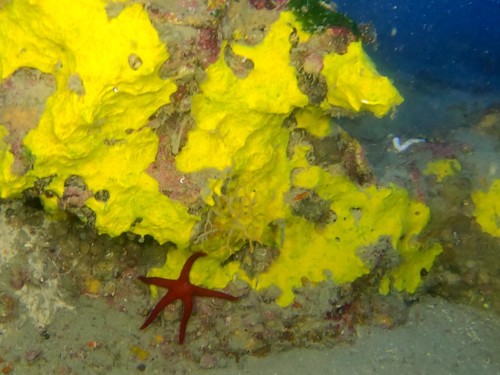
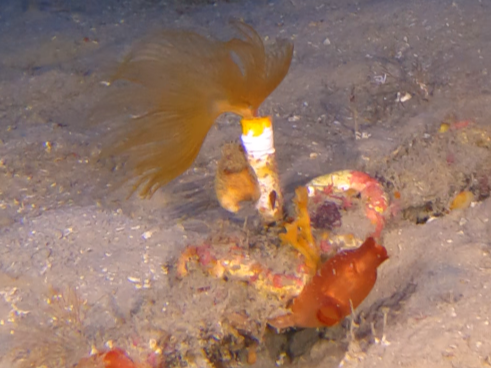
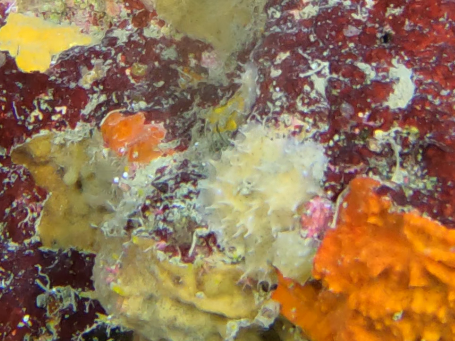
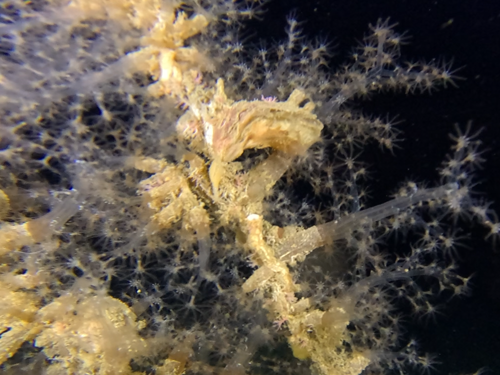

 Back
Back